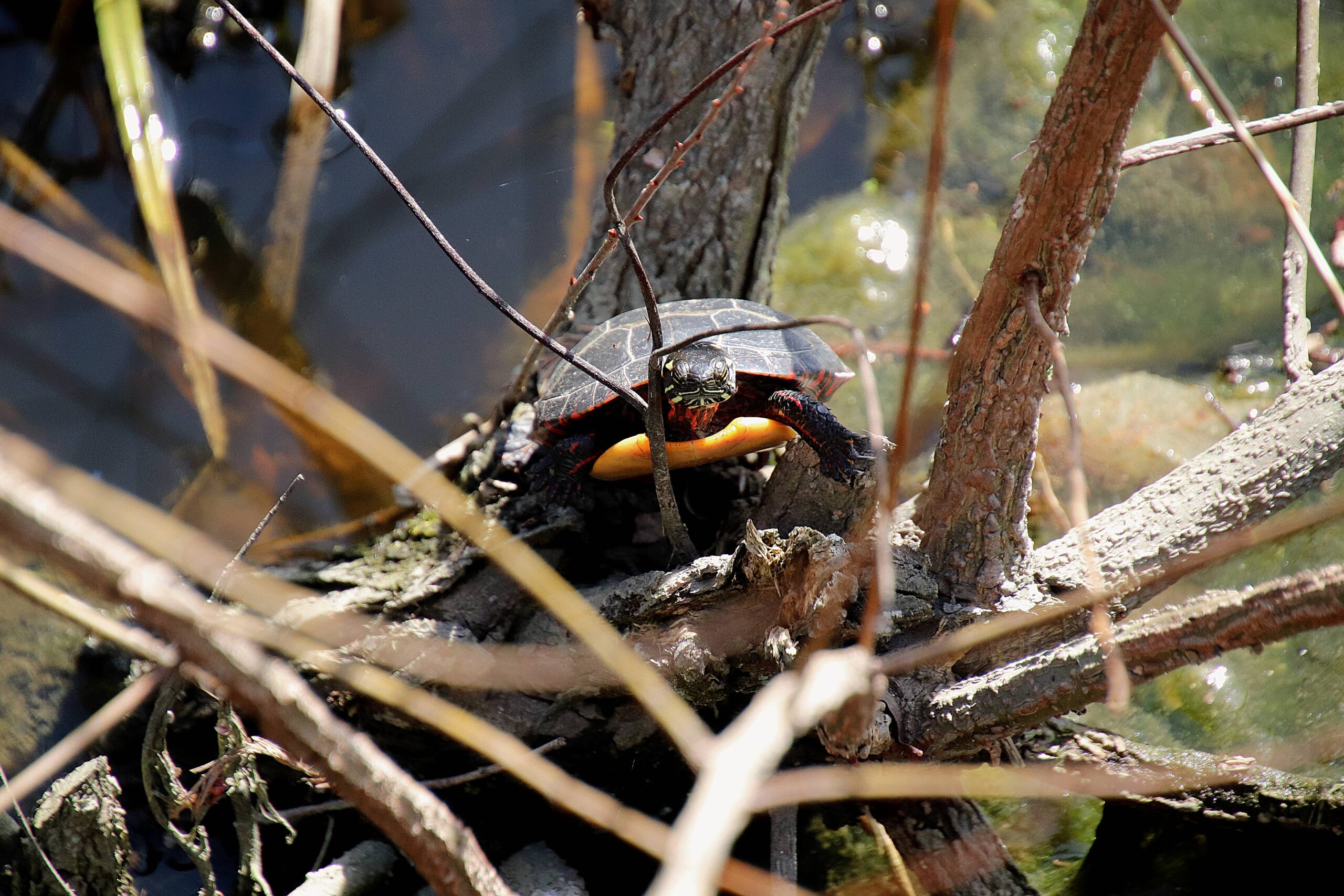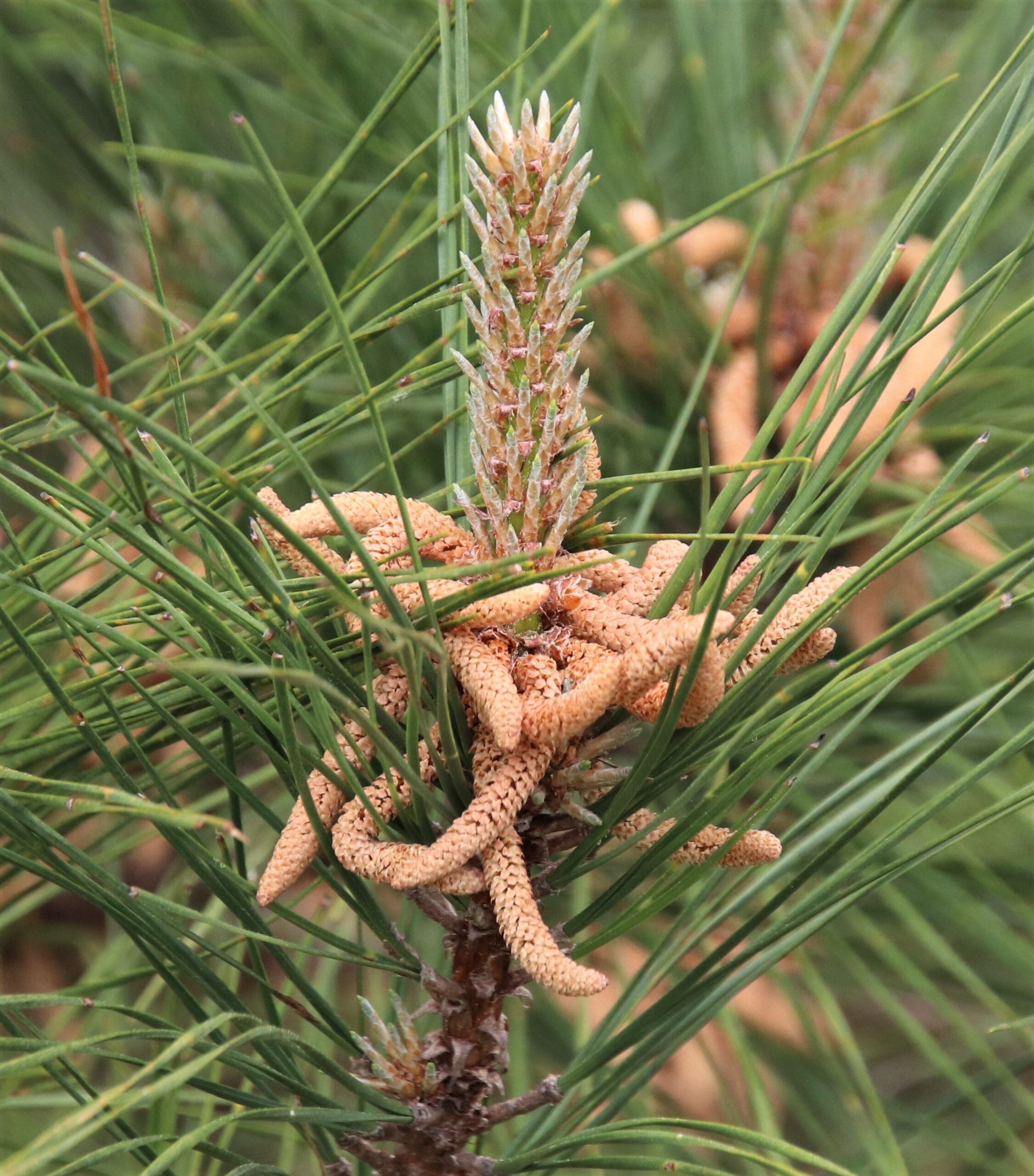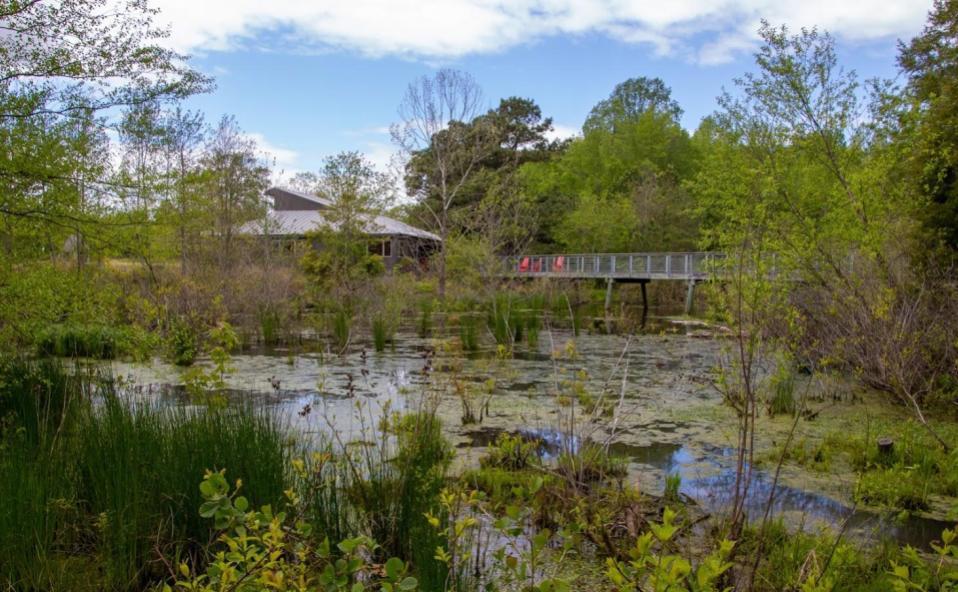Guess the photo:

The answer to last week’s mystery is loblolly pine, Pinus taeda, pictured in photo here:

Loblolly pine is the second-most common species of tree in the United States, after red maple. It is one of the fastest growing pines making it a valuable species in the lumber industry. The lumber is marketed as yellow pine lumber. Loblolly wood is valued as being hard and dense relative to other pines, and it is widely used in construction.
The word “loblolly” is a combination of “lob”, referring to the thick, heavy bubbling of cooking porridge, and “lolly”, an old British dialect word for broth, soup, or any other food boiled in a pot.
Loblolly pines are generally found in lowlands and swampy areas, and are the dominant tree at the transition zone between salt marsh and woodland. Brown-headed nuthatch and yellow-throated warbler are dependent on loblolly pine forests for food and nesting.
Loblolly pine seeds were carried aboard the Apollo 14 flight. On its return, the seeds were planted in several locations in the United States, including the grounds of the White House. As of 2016, a number of these moon trees remain alive.
Mystery Monday is sponsored by the Spy Newspapers and Adkins Arboretum.



Write a Letter to the Editor on this Article
We encourage readers to offer their point of view on this article by submitting the following form. Editing is sometimes necessary and is done at the discretion of the editorial staff.